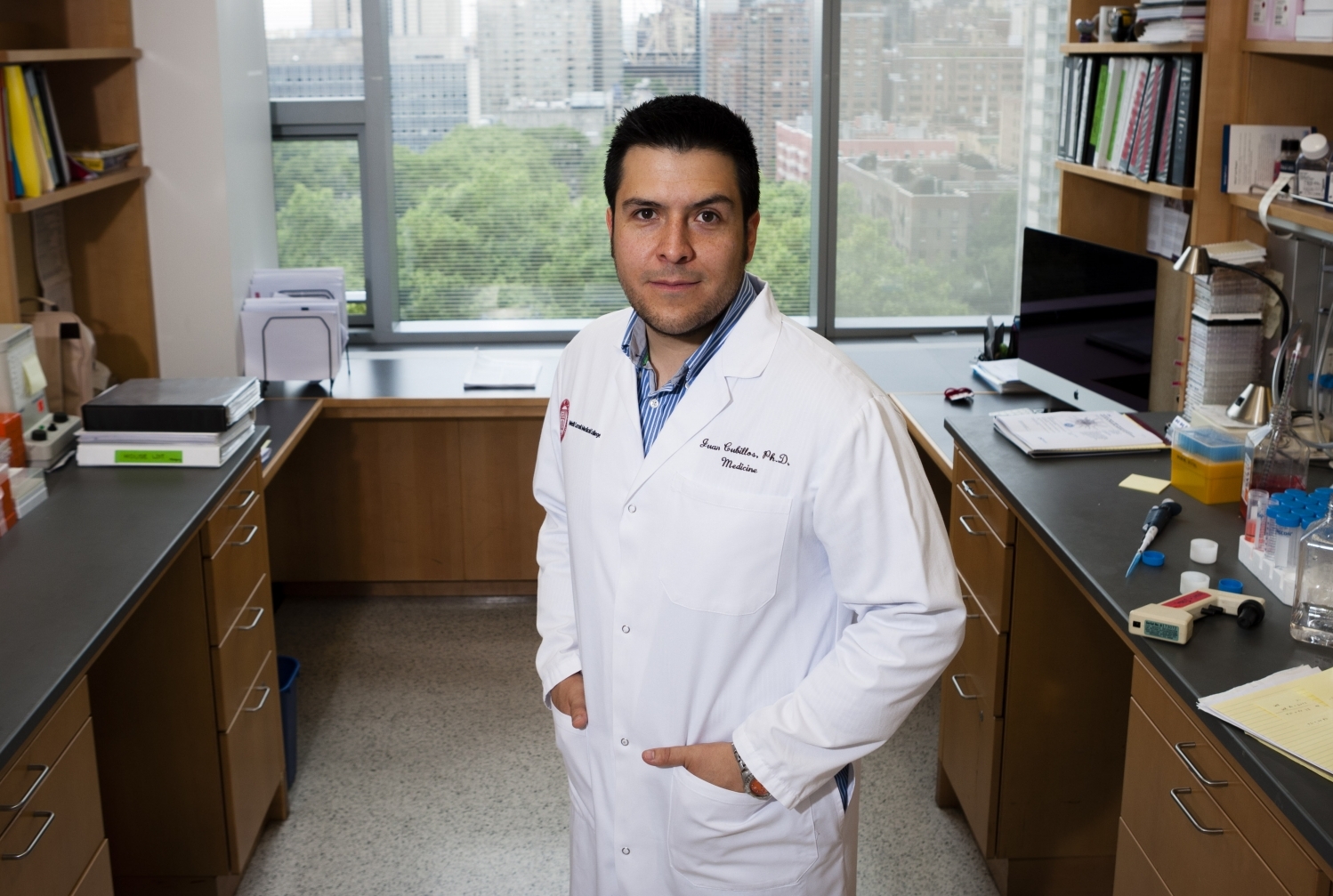A molecular pathway known for responding to cellular stress also produces pain-inducing molecules in immune cells, according to a new study by scientists at Weill Cornell Medicine, Dana-Farber Cancer Institute, Harvard Medical School and Wake Forest University School of Medicine. The investigators found that blocking this pathway can reduce pain.
The findings, published online July 18 and in the July 19 print issue of Science, emerged as the research team was studying the IRE1a-XBP1 pathway, which normally helps protect cells from the harmful accumulation of unfolded proteins in the endoplasmic reticulum, a cellular structure involved in the production of proteins and fats. The discovery that activation of IRE1a-XBP1 promotes pain may lead to new approaches to pain management that avoid the serious risks associated with widely used opioid pain medications.
“We discovered that IRE1a-XBP1 activation controls a metabolic process in immune cells that enables the production of pain-inducing molecules called prostaglandins,” said lead senior author Dr. Juan Cubillos-Ruiz, the William J. Ledger, M.D., Assistant Professor for Infection and Immunology and a member of the Sandra and Edward Meyer Cancer Center at Weill Cornell Medicine.
The researchers made the discovery when they triggered an inflammatory response in immune cells lacking components of the IRE1a-XBP1 pathway and analyzed how this altered the expression of other proteins in the cells. They found that two enzymes critically required for the production of prostaglandins, Cox-2 and mPGES-1, were reduced in immune cells that lacked IRE1a-XBP1.
“Our discovery now opens the possibility of modulating the IRE1a-XBP1 pathway to more effectively control pain,” said Dr. Cubillos-Ruiz, who receives stock options, royalties and is a paid scientific advisory board member for Quentis Therapeutics, Inc., a biotechnology company pursuing next-generation immuno-oncology research and drug development.
“This study demonstrates that inactivating this pathway is useful for reducing pain behaviors in animal models,” said study co-author and prostaglandin expert Dr. Andrew Dannenberg, the Henry R. Erle M.D.-Roberts Family Professor of Medicine in the Division of Gastroenterology and Hepatology at Weill Cornell Medicine.
The team also found that IRE1a-XBP1 activation in immune cells promotes the production of molecules called cytokines, which are involved in the perpetuation of pain. Their discovery may help explain why some people with inflammatory diseases or who have certain surgical procedures develop chronic pain. “This pathway may have evolved to alert the body to tissue injury, but there may be circumstances where this pathway becomes persistently activated and promotes chronic pain,” Dr. Cubillos-Ruiz said.
Prostaglandins have a well-known role in pain, Dr. Cubillos-Ruiz said. In fact, common over-the-counter nonsteroidal anti-inflammatory drugs like ibuprofen inhibit the activity of Cox enzymes to limit the production of prostaglandins. However, he explained, inhibiting IRE1a-XBP1 may produce better pain relief than targeting Cox enzymes because this pathway regulates the production of additional inflammatory mediators.
“This is a promising discovery that has the potential to pave the way to new strategies for safer, more effective pain management, which is crucially important for improving public health,” said co-corresponding author Dr. Laurie H. Glimcher, president and CEO of Dana-Farber Cancer Institute. “It’s another example of how understanding the role of the immune system more deeply offers the promise of better health outcomes for more people, ranging from pain management, to cancer and other diseases long-thought untreatable.” Dr. Glimcher is the founder and chair of the scientific advisor board of Quentis Therapeutics, Inc., and serves on the board of directors at GlaxoSmithKline Pharmaceuticals and the Waters Corporation. She is also member of the scientific advisory board at AbproTherapeutics, RepareTherapeutics and KaleidoBioSciences, Inc. She holds equity in all of these companies, as well as in Bristol-Myers Squibb, where she was a former director.
To find out if blocking the IRE1a-XBP1 pathway could help alleviate pain, the team turned to co-senior author and expert pain researcher Dr. Edgar Alfonso Romero-Sandoval, an associate professor of anesthesiology at Wake Forest University School of Medicine in Winston-Salem, N.C. Dr. Romero-Sandoval and his team conducted experiments that demonstrated that mice engineered to selectively lack IRE1a-XBP1 in immune cells experience less pain in models that mimicked visceral or post-surgical pain.
They also found that two experimental small-molecule inhibitors, KIRA6 and MKC8866, that block the IRE1a-XBP1 pathway, also reduce pain responses in mice.
“We have identified a new mechanism in immune cells that promotes prostaglandin production,” Dr. Romero-Sandoval said. “Disabling this pathway not only reduces pain, but also permits a faster recovery from it.”
Dr. Romero-Sandoval said discovering new ways to treat pain is particularly crucial right now because of the ongoing opioid crisis. He noted that this very targeted approach could avoid some of the harmful side effects that have been seen with pain treatments that directly target nerve cells, such as opioids or anticonvulsants, or that obliterate the activity of immune cells, such as glucocorticoids.
“The role of immune cells in pain has been studied, but in a very crude manner,” Dr. Romero-Sandoval said. “Our studies have uncovered a signaling pathway that allows us to fine tune the metabolism and function of immune cells. We have demonstrated that this is a target that can potentially be blocked by a drug, which may have significant implications for the management of acute or chronic pain.”
Dr. Dannenberg, who is also the associate director of Cancer Prevention at the Sandra and Edward Meyer Cancer Center at Weill Cornell Medicine, is optimistic that the discovery may yield new approaches to treating pain and valuable insights on many other conditions that involve prostaglandins, including cancer, inflammatory diseases and immune system disorders.
“There is reason for hope that this research may give rise to new and more effective approaches for pain management in the future,” he said. “Though the current study is focused exclusively on pain, there may also be medical implications above and beyond.”

